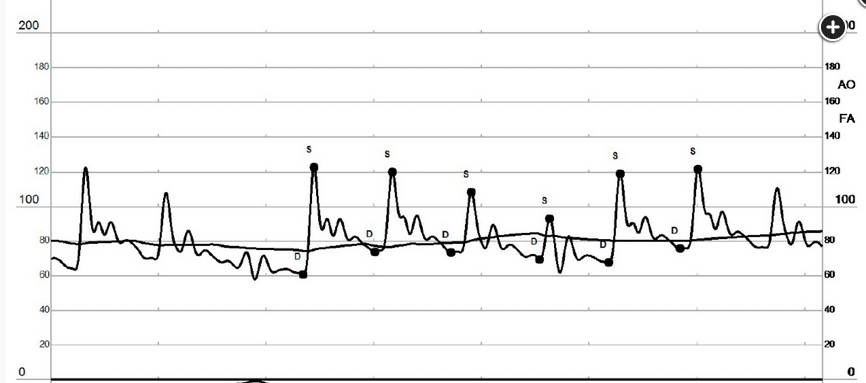pulsus paradoxus and electrical alternans
- related: pericardial effusion with tamponade physiology
- tags: #literature #cardiology
Pulsus paradoxus represents exaggerated ventricular interdependence and is a key clinical feature of cardiac tamponade. Because both the right and left ventricles are encased in a pericardium with fixed volume owing to a pericardial effusion, increased right ventricular (RV) filling with inspiration causes the right ventricle to fill at the expense of the left ventricle, decreasing left ventricular (LV) stroke volume and BP.1
It is characterized by a fall in systolic pressure of greater than 10 mm Hg during inspiration. Pulsus paradoxus is not specific for tamponade and must be interpreted in conjunction with other clinical and echocardiographic features.
This variation in arterial pressure with respiration can be seen on the arterial tracing (Figure 3).

The ECG may demonstrate electrical alternans (related to a swinging motion of the heart within the pericardial fluid) or low voltage in patients with tamponade. If the accumulation of fluid has occurred slowly, the cardiac silhouette is typically enlarged on chest radiography.2
Links to this note
-
tamponade physical exam and EKG findings
- Other examination findings include tachycardia (as a compensatory mechanism to the decreased stroke volume) and pulsus paradoxus (a decrease in systolic BP >10 mm Hg with inspiration). Common ECG findings include low QRS voltage, PR segment depression, electrical alternans (pulsus paradoxus and electrical alternans), and sinus tachycardia.[^1][^2]